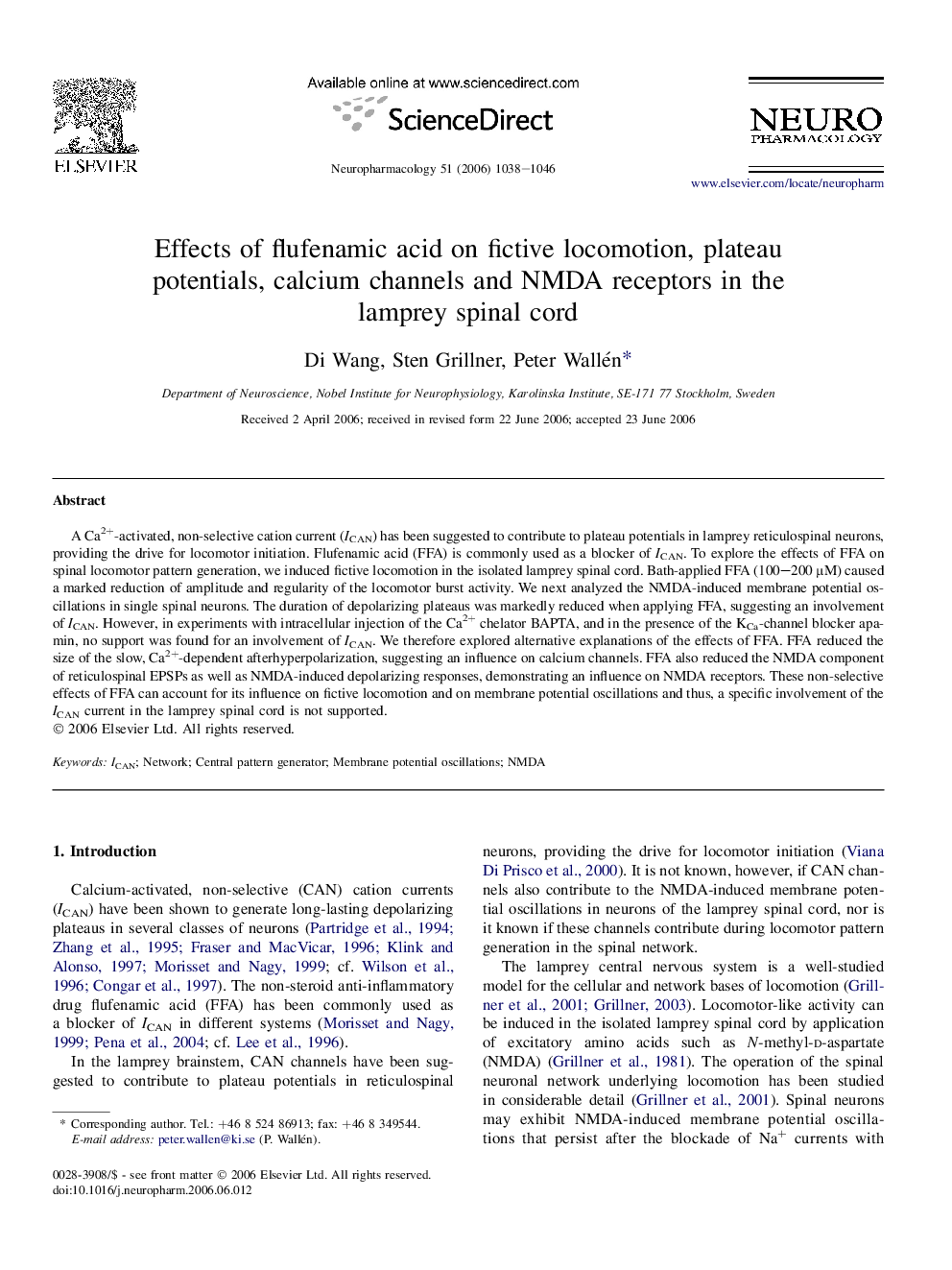| کد مقاله | کد نشریه | سال انتشار | مقاله انگلیسی | نسخه تمام متن |
|---|---|---|---|---|
| 2495030 | 1115592 | 2006 | 9 صفحه PDF | دانلود رایگان |

A Ca2+-activated, non-selective cation current (ICAN) has been suggested to contribute to plateau potentials in lamprey reticulospinal neurons, providing the drive for locomotor initiation. Flufenamic acid (FFA) is commonly used as a blocker of ICAN. To explore the effects of FFA on spinal locomotor pattern generation, we induced fictive locomotion in the isolated lamprey spinal cord. Bath-applied FFA (100–200 μM) caused a marked reduction of amplitude and regularity of the locomotor burst activity. We next analyzed the NMDA-induced membrane potential oscillations in single spinal neurons. The duration of depolarizing plateaus was markedly reduced when applying FFA, suggesting an involvement of ICAN. However, in experiments with intracellular injection of the Ca2+ chelator BAPTA, and in the presence of the KCa-channel blocker apamin, no support was found for an involvement of ICAN. We therefore explored alternative explanations of the effects of FFA. FFA reduced the size of the slow, Ca2+-dependent afterhyperpolarization, suggesting an influence on calcium channels. FFA also reduced the NMDA component of reticulospinal EPSPs as well as NMDA-induced depolarizing responses, demonstrating an influence on NMDA receptors. These non-selective effects of FFA can account for its influence on fictive locomotion and on membrane potential oscillations and thus, a specific involvement of the ICAN current in the lamprey spinal cord is not supported.
Journal: Neuropharmacology - Volume 51, Issue 6, November 2006, Pages 1038–1046